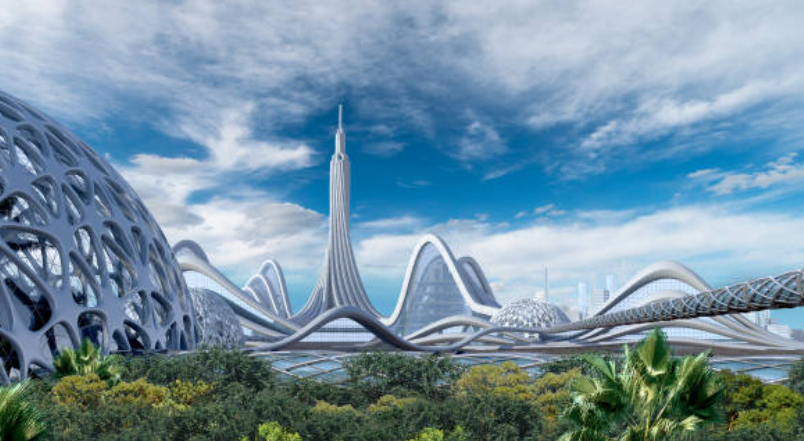
Posted on Friday, September 27, 2024
The metal building industry is rapidly evolving, driven by the need for sustainability, efficiency, and technological advancement. As we move into the future, several key trends are shaping the landscape of metal construction, ranging from energy-efficient designs to smart building technologies. In parallel, roll forming machines, which are essential for producing key components of metal structures, are adapting to meet these modern demands. This blog explores the trends transforming the industry and how roll forming technology is supporting these innovations.
As global demand for sustainable construction practices grows, energy efficiency is at the forefront of metal building design. One major innovation is the increased use of Insulated Metal Panels (IMPs), which provide superior thermal performance, helping to reduce energy consumption for heating and cooling. These panels are not only energy-efficient but also cost-effective over the long term, making them a popular choice for commercial and industrial buildings.
Roll forming machines are crucial in the production of these insulated panels, enabling manufacturers to produce them with greater precision and speed. New advancements in roll forming technology allow for the integration of multiple layers of insulation within the panels during the manufacturing process. This results in panels that meet or exceed increasingly strict energy efficiency standards while minimizing waste. As a result, buildings made from these materials are more sustainable and cost-efficient.
Modular construction is gaining momentum due to its ability to reduce construction time and costs while maintaining high-quality standards. In a modular system, building components are prefabricated in a factory and then transported to the site for quick assembly. This process can be up to 50% faster than traditional construction, with less environmental impact.
Roll forming machines are at the heart of modular construction, producing custom metal components that can be easily integrated into prefabricated structures. These machines can create precise parts that fit seamlessly together, reducing the need for on-site modifications. The ability to manufacture tailor-made components for modular buildings ensures quicker project turnaround times and lower labor costs, giving manufacturers a competitive edge in this growing market.
As technology continues to advance, so too does the integration of smart building systems in modern metal structures. Smart buildings utilize sensors, automation systems, and data analytics to enhance energy efficiency, security, and user comfort. The incorporation of smart technologies into metal buildings can improve energy management, reduce operational costs, and offer real-time data for building maintenance.
One of the most exciting developments in this area is the integration of solar panel systems into metal roofing and façades. Roll forming machines now play a key role in manufacturing metal roofing profiles that are pre-configured to accommodate solar panels. This innovation allows for easier and faster installation of solar panels, promoting the use of renewable energy within metal buildings. As more businesses and governments invest in green energy solutions, this trend will continue to grow.
Metal buildings are renowned for their strength and durability, but innovations in material science are allowing for the development of lighter framing systems without compromising structural integrity. These lightweight systems make transportation easier and reduce the overall cost of building materials, while also speeding up the construction process.
Modern roll forming machines are capable of producing high-strength, lightweight metal components designed to meet the demands of modern construction. These machines can roll form advanced materials, such as high-tensile steel, into precision parts that offer the best of both worlds: strength and reduced weight. This not only improves building efficiency but also allows for more innovative architectural designs.
Roll forming technology is evolving alongside the trends driving the future of the metal building industry. Whether producing energy-efficient insulated panels, modular building components, or solar-ready roofing systems, roll forming machines are critical in enabling manufacturers to meet the demands of modern construction. As buildings become smarter, more sustainable, and more efficient, the capabilities of roll forming technology will continue to grow, ensuring that the metal building industry remains at the cutting edge of innovation.
The future of metal buildings is bright, with advancements in energy-efficient designs, modular construction, smart building technologies, and lightweight framing systems driving the industry forward. Roll forming machines are a pivotal part of this transformation, providing the precision and efficiency needed to meet these modern demands. As the construction industry continues to innovate, roll forming technology will remain a key player in shaping the buildings of tomorrow.
By staying at the forefront of these trends, manufacturers can ensure that they are prepared to meet the growing demands of a rapidly evolving market, offering cutting-edge solutions for the future of metal construction.

Most Popular Roll Forming Machines in the United Kingdom
Posted on Thursday, December 11, 2025
This blog breaks down the five most in-demand roll forming machines in the UK

Can I Finance a Roll Forming Machine?
Posted on Thursday, December 11, 2025
Financing a roll forming machine is easier than most buyers think. Here’s how leases, loans, and payment plans make production affordable.

Roll Forming Machines for Sale in the UK: What Buyers Need to Know Before Purchasing
Posted on Thursday, December 11, 2025
This complete guide explains everything UK buyers must know before purchasing, including machine types, voltage requirements, CE/UKCA compliance

Roll Forming Machines for Sale in the USA: What Buyers Need to Know Before Purchasing
Posted on Wednesday, December 10, 2025
This guide explains everything U.S. buyers need to know before purchasing a roll forming machine, including machine types, pricing, voltage
Copyright 2026 © Machine Matcher.